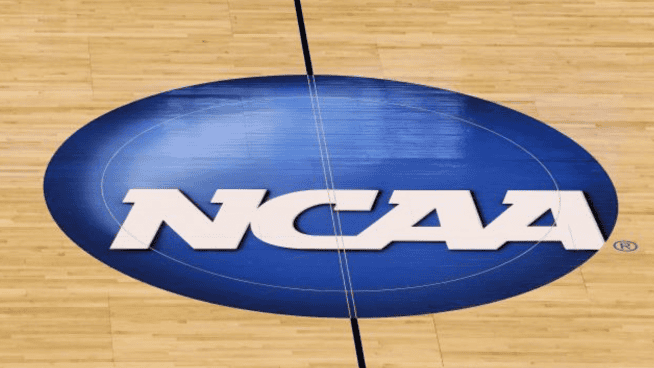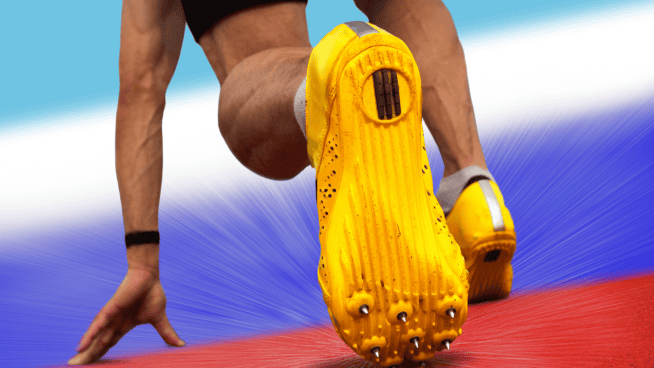The Case for Paying College Athletes
“The real scandal is not that students are getting illegally paid or recruited…at the heart of college sports…it’s that more of them are not,” writes civil rights historian Taylor Branch in the Atlantic Monthly.
The rising subject of scrutiny: how American collegiate student-athletes generate billions of dollars for universities and private companies—from ticket sales, concession sales, merchandise, licensing fees and (the most profitable) television contracts—while they earn nothing.
Some of the biggest revenue schools—Texas, Florida, Georgia, Michigan and Penn Sate, among others—earn between $40 million and $80 million in profits each year. And that’s after paying their coaches multimillion-dollar salaries. According to the New York Times, the combined salaries of the highest-paid college football coaches in 2011 was $53.4 million. Ohio State recently agreed to pay Urban Meyer $24 million over six years. The estimated average compensation for head football coaches at public universities is more than $2 million per year, an increase of 750 percent (adjusted for inflation) since 1984 and more than 20 times the cumulative percentage increase in compensation of college professors. In Division I basketball, average coach salaries now exceed $4 million a year. College football and men’s basketball are huge business enterprises, generating more than $6 billion a year in annual revenue—even more than the NBA.
Big brands like Nike, adidas, Reebok and Under Armour are writing hefty checks to schools, but the marketing of sports footwear, apparel and equipment through college sports programs is just the tip of the cash-flow iceberg. Food, beer, alcohol, credit card and auto companies (to name a few) are also throwing money down. But, according to Sonny Vaccaro, the former sports marketing executive who signed Michael Jordan with Nike, 90 percent of the NCAA’s revenue is produced by one percent of the athletes. (In 1929, a report from the Carnegie Foundation on “American College Athletics” stated that colleges gunning for players had “reached the proportions of nationwide commerce.”)
The brands, coaches and universities are profiting not only from sponsorships and television contracts, but also from sales of personalized jerseys, DVDs and video games. Last year, EA Games paid more than $35 million to NFL players for the use of their names and images, while nothing was shelled out to current or former college players. In 1993, NCAA spokesperson Erick Christianson said, “The NCAA does not license student-athlete likeness.” Rather, the organization penalizes student-athletes for violating their “amateur status,” as it did to wide receiver A.J. Green for selling his own University of Georgia jersey.
The NCAA’s “Student-Athlete Statement,” which collegiate athletes must sign to maintain their “amateur status,” is required and collected yearly from every college athlete. For Division I athletes, it includes an authorization for the use of their “name or picture…to promote NCAA events, activities or programs.” Does this claim actually undermine itself by implicitly recognizing that athletes have property rights in their names and likenesses, and to their own athletic accomplishments? By “waiving a right” to share in the proceeds from sales based on your athletic performance, wouldn’t you have to first possess that right?
From the memoir of Walter Byers, the “architect” of the NCAA through its ascension to control over collegiate athletes and certain universities: “The college player cannot sell his own feet (the coach does that) nor can he sell his own name (the college will do that). This is the plantation mentality resurrected and blessed by today’s campus executives.”
Atlantic writer Branch asserts that the reason why collegiate athletes are not been paid stems from the NCAA’s longstanding defense of two notions: “amateurism” and “the student-athlete.” While the term “student-athlete” evokes the precedence of academics over athletics, sports economist Andrew Zimbalist deduces that the signature term was crafted and implanted in NCAA doctrine for the purpose of disputing the increasing number of workmen’s compensation insurance claims filed by seriously injured football players. However, the student-athlete pretense was ambivalent by design. Branch writes, “That they were high-performance athletes meant they could be forgiven for not meeting academic standards of their peers; that they were students meant they did not have to be compensated, ever, for anything more than the cost of their studies.”
But what constitutes employment, specifically, within a university? Certainly working part-time in the bookstore, the library or the campus pub falls under the definition. Should playing college sports (which consumes the bulk of student-athletes’ time, energy and in some cases health) continue to be considered a mere extra-curricular because the students do not pay taxes on their financial aid (the claim on which a ruling in June 2000 was based, denying former TCU running back Kent Waldrep of workers’ compensation)?
In response to increasing scrutiny, NCAA president Mark Emmert pushed for a series of minimal reforms: a comprehensive review of the NCAA rule book; a new provision giving universities the option to offer four-year scholarships (instead of the current one-year deals, which are renewable at the discretion of the coaches, who can simply cut underperforming or injured “student-athletes”); and permission for Division I athletic programs to pay their athletes a $2,000 stipend. However, the stipend condition was revoked a few weeks ago after many college athletic directors and conference commissioners claimed they could not afford it.
Given the widespread concealed revenue streams in college sports, demands are being made for full disclosure of what the NCAA receives, and for all finances—from stadium tickets to shoe deals—to be publicly revealed. For example, last year CBS Sports and Turner Broadcasting paid the NCAA $771 million for television rights to the men’s March Madness tournament. There is also talk of a national playoff in college football, as opposed to the existing bowl system. A national playoff, without the NCAA’s assistance, could generate up to three or four times as much money as the existing bowl system, argues Jim Delany, commissioner of the Big Ten.
Assuming that in the future D-I football and men’s basketball players will be paid for their services, how would one construct a fair and functional compensation system? Several proposals have already come forth, including one by George Dohrmann in Sports Illustrated and, more recently, another by Joe Nocera in the New York Times.
These proposals offer much to ponder, because, after all, how much of the athlete’s integrity is really being preserved with the current unpaid system? Even if an athlete receives a so-called “free ride” academically (which itself can be slightly misleading), is that compensation enough?
Source: theatlantic.com, nytimes.com
Photo: breitbart.com
RECOMMENDED FOR YOU
MOST POPULAR
The Case for Paying College Athletes
“The real scandal is not that students are getting illegally paid or recruited…at the heart of college sports…it’s that more of them are not,” writes civil rights historian Taylor Branch in the Atlantic Monthly.
The rising subject of scrutiny: how American collegiate student-athletes generate billions of dollars for universities and private companies—from ticket sales, concession sales, merchandise, licensing fees and (the most profitable) television contracts—while they earn nothing.
Some of the biggest revenue schools—Texas, Florida, Georgia, Michigan and Penn Sate, among others—earn between $40 million and $80 million in profits each year. And that’s after paying their coaches multimillion-dollar salaries. According to the New York Times, the combined salaries of the highest-paid college football coaches in 2011 was $53.4 million. Ohio State recently agreed to pay Urban Meyer $24 million over six years. The estimated average compensation for head football coaches at public universities is more than $2 million per year, an increase of 750 percent (adjusted for inflation) since 1984 and more than 20 times the cumulative percentage increase in compensation of college professors. In Division I basketball, average coach salaries now exceed $4 million a year. College football and men’s basketball are huge business enterprises, generating more than $6 billion a year in annual revenue—even more than the NBA.
Big brands like Nike, adidas, Reebok and Under Armour are writing hefty checks to schools, but the marketing of sports footwear, apparel and equipment through college sports programs is just the tip of the cash-flow iceberg. Food, beer, alcohol, credit card and auto companies (to name a few) are also throwing money down. But, according to Sonny Vaccaro, the former sports marketing executive who signed Michael Jordan with Nike, 90 percent of the NCAA’s revenue is produced by one percent of the athletes. (In 1929, a report from the Carnegie Foundation on “American College Athletics” stated that colleges gunning for players had “reached the proportions of nationwide commerce.”)
The brands, coaches and universities are profiting not only from sponsorships and television contracts, but also from sales of personalized jerseys, DVDs and video games. Last year, EA Games paid more than $35 million to NFL players for the use of their names and images, while nothing was shelled out to current or former college players. In 1993, NCAA spokesperson Erick Christianson said, “The NCAA does not license student-athlete likeness.” Rather, the organization penalizes student-athletes for violating their “amateur status,” as it did to wide receiver A.J. Green for selling his own University of Georgia jersey.
The NCAA’s “Student-Athlete Statement,” which collegiate athletes must sign to maintain their “amateur status,” is required and collected yearly from every college athlete. For Division I athletes, it includes an authorization for the use of their “name or picture…to promote NCAA events, activities or programs.” Does this claim actually undermine itself by implicitly recognizing that athletes have property rights in their names and likenesses, and to their own athletic accomplishments? By “waiving a right” to share in the proceeds from sales based on your athletic performance, wouldn’t you have to first possess that right?
From the memoir of Walter Byers, the “architect” of the NCAA through its ascension to control over collegiate athletes and certain universities: “The college player cannot sell his own feet (the coach does that) nor can he sell his own name (the college will do that). This is the plantation mentality resurrected and blessed by today’s campus executives.”
Atlantic writer Branch asserts that the reason why collegiate athletes are not been paid stems from the NCAA’s longstanding defense of two notions: “amateurism” and “the student-athlete.” While the term “student-athlete” evokes the precedence of academics over athletics, sports economist Andrew Zimbalist deduces that the signature term was crafted and implanted in NCAA doctrine for the purpose of disputing the increasing number of workmen’s compensation insurance claims filed by seriously injured football players. However, the student-athlete pretense was ambivalent by design. Branch writes, “That they were high-performance athletes meant they could be forgiven for not meeting academic standards of their peers; that they were students meant they did not have to be compensated, ever, for anything more than the cost of their studies.”
But what constitutes employment, specifically, within a university? Certainly working part-time in the bookstore, the library or the campus pub falls under the definition. Should playing college sports (which consumes the bulk of student-athletes’ time, energy and in some cases health) continue to be considered a mere extra-curricular because the students do not pay taxes on their financial aid (the claim on which a ruling in June 2000 was based, denying former TCU running back Kent Waldrep of workers’ compensation)?
In response to increasing scrutiny, NCAA president Mark Emmert pushed for a series of minimal reforms: a comprehensive review of the NCAA rule book; a new provision giving universities the option to offer four-year scholarships (instead of the current one-year deals, which are renewable at the discretion of the coaches, who can simply cut underperforming or injured “student-athletes”); and permission for Division I athletic programs to pay their athletes a $2,000 stipend. However, the stipend condition was revoked a few weeks ago after many college athletic directors and conference commissioners claimed they could not afford it.
Given the widespread concealed revenue streams in college sports, demands are being made for full disclosure of what the NCAA receives, and for all finances—from stadium tickets to shoe deals—to be publicly revealed. For example, last year CBS Sports and Turner Broadcasting paid the NCAA $771 million for television rights to the men’s March Madness tournament. There is also talk of a national playoff in college football, as opposed to the existing bowl system. A national playoff, without the NCAA’s assistance, could generate up to three or four times as much money as the existing bowl system, argues Jim Delany, commissioner of the Big Ten.
Assuming that in the future D-I football and men’s basketball players will be paid for their services, how would one construct a fair and functional compensation system? Several proposals have already come forth, including one by George Dohrmann in Sports Illustrated and, more recently, another by Joe Nocera in the New York Times.
These proposals offer much to ponder, because, after all, how much of the athlete’s integrity is really being preserved with the current unpaid system? Even if an athlete receives a so-called “free ride” academically (which itself can be slightly misleading), is that compensation enough?
Source: theatlantic.com, nytimes.com
Photo: breitbart.com
RECOMMENDED FOR YOU
Create A Free Recruiting Profile Today!
CaptainU helps athletes & parents not only be proactive but also to manage and take control of their entire recruiting journey.











